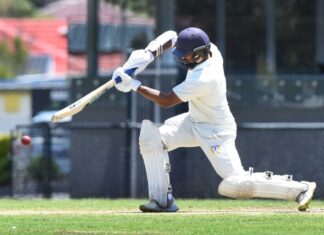Just outside Adelaide Oval, (home of South Auatralian cricket), there is a magnificant bronze statue of Sir Donald Bradman.
The ‘Don’ is one of Australia’s most recognised and loved athletes.
His career as the world’s best batsman ended, when at his last first class innings, he was bowled for a duck by a bowler whose name and feats are known only to a few. Imagine the outrage triggered by any proposal to install a statue, to be placed near the Don, of the bowler who took his wicket on that final occasion.
The very same senario can be applied to the statue of Edwin Flack currently standing in High Street, Berwick.
Edwin Flack, like Sir Donald is a national hero as the first Australian to win Gold, (800 and 1500 metres), at the first modern Olympics in 1896.
It matters not that he started in the marathon and withdrew part way through only to see a Greek runner pass him and go on to win.
This does not mean that a statue of the winner, Spiridon Louis, should be placed shoulder to shoulder with Edwin Flack in High Street, Berwick.
Any statue of Spiridon should be in his home town in Greece or, as it has been the case, in Sydney, where a modernistic statue of Spiridon already exists in Brighton-le-Sands, in the heart of the Sydney Greek community.
Statues are the highest tribute that can be accorded to a person’s achievements within our community.
To place a statue of a relatively unknown runner in the presence of Australian icons, (council is considering a statue of the late Lord Casey for High Street, Berwick), is an affront to the dignity of these very special persons.
John Hastie,
Berwick.
Get the latest news to your email inbox FREE!
REGISTER




